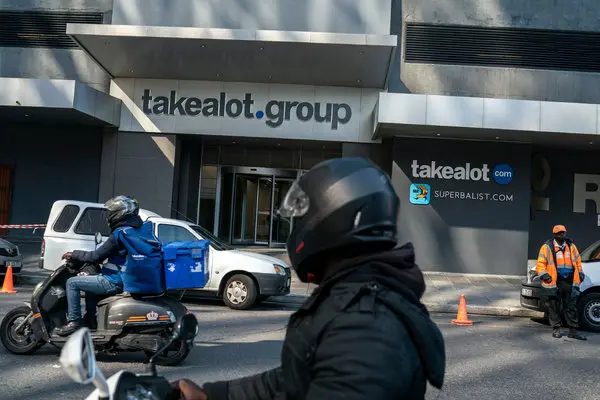South Africa’s Long-Neglected Townships Are Attracting Its Rattled Top E-tailer

South Africa’s largest e-commerce platform, Takealot, is turning its gaze beyond metropolitan strongholds in a strategic push to capture the elusive township market. As competition from international heavyweights like Shein, Temu, and Amazon ramps up, Takealot is betting that last-mile delivery solutions and government partnerships can keep it in the lead.
But breaking into township economies is fraught with challenges. Poor infrastructure, security risks, and high delivery costs have long held back e-commerce penetration in South Africa’s underserved regions. Yet, Takealot believes it has a plan to not just break through but thrive.
Takealot’s latest initiative, launched in collaboration with the Mpumalanga provincial government, is designed to tackle one of the most stubborn barriers to e-commerce: effective last-mile delivery. The company plans to recruit 1,000 delivery drivers in Mpumalanga, a key province for its township rollout.
Tshepo Marumule, Takealot’s head of external affairs, underscored the importance of reaching residents who previously had limited access to the platform. “People need to know that they don’t have to go all the way to Mbombela to have access to what they need as they can have it delivered,” he told Sunday Times.
Takealot will deploy these drivers for both its main platform and the food delivery service Mr D. This move aims to unlock demand by addressing a core pain point: accessibility. The company is also investing in electric bicycles for riders, hoping to reduce costs and enhance safety in areas where motorcycles are seen as dangerous or inefficient.
Security Concerns and Cost Challenges
Takealot’s township expansion comes at a time when e-commerce in South Africa is grappling with heightened security issues. FarEye CEO Kushal Nahata recently pointed out that the country’s delivery costs are 50% to 100% higher than the global average, partly due to rampant vehicle hijackings. Data from Tracker shows that delivery vehicles are now more likely to be hijacked than personal cars, with incidents spiking during peak retail periods like Black Friday and Christmas. “Security expenses are the biggest concern for couriers,” the SA Production and Inventory Control Society noted in a recent report.
Marumule acknowledged these risks, stating that Takealot is in discussions with the Mpumalanga government to find ways to safeguard drivers. For Takealot, mitigating these security threats is not just a logistical issue but a financial one, as heightened security demands could erode the cost benefits of expansion.
Lessons from other markets
Takealot is not alone in navigating the complexities of e-commerce in underserved areas. Jumia, another major player in Africa’s e-commerce market, has similarly faced infrastructure and cost hurdles but found partial success with a network of pickup stations. By allowing customers to collect orders from central locations, Jumia has reduced last-mile delivery costs and boosted accessibility in places like Uganda, where 24% of deliveries now occur in rural regions.
This pickup model has proven especially effective in areas lacking formal addresses and reliable roads. Jumia’s CEO, Francis Dufay, emphasised that pickup stations have helped the company offer “competitive delivery options without the need for complex last-mile logistics.” However, even with this success, the challenge of scaling sustainably remains, especially as economic pressures mount.
Township economies in South Africa represent a tantalising yet challenging market, estimated at ZAR 200 B (~USD 11.4 B) annually by Trade Intelligence. Despite this potential, issues like limited internet access, digital illiteracy, and consumer distrust in online payments persist. Andy Higgins of Bob Group pointed out that e-commerce platforms must adapt by offering “mobile-friendly interfaces, flexible payment options, and affordable delivery solutions.”
Regarding affordable delivery solutions, Higgins opines that partnerships with local couriers or logistics services that understand the nuances of township delivery can be a gamechanger for township businesses while noting that pickup points can overcome the lack of formalised addresses in these areas.
“Likewise, security concerns can be alleviated by limiting distribution to more secure locations using a pickup point network,” he adds.
Digital literacy campaigns and partnerships with community organizations could also help, but these efforts require long-term commitment. Takealot, like others, will have to grapple with the realities of providing e-commerce services in areas where basic infrastructure is lacking.
As Takealot works to entrench itself deeper into the township market, it faces a rapidly changing landscape. Amazon’s entry into South Africa could shake up the market, with promises of economies of scale that could drive down prices. Meanwhile, fast-fashion e-tailers Shein and Temu have made aggressive inroads into the local market, leveraging global supply chains to offer unbeatable prices.
This shakeup could redefine e-commerce for millions of South Africans—but only if Takealot, and its competitors, can deliver on their promises in the face of significant hurdles.